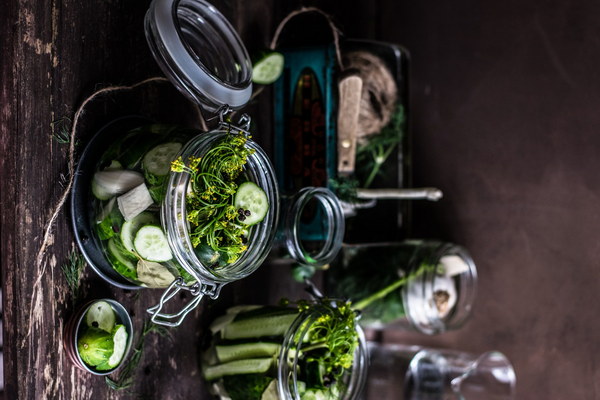How Often Should You Take a Chinese Herbal Bath for Building Qi and Blood
In the realm of traditional Chinese medicine, the practice of herbal bathing has long been recognized for its numerous health benefits. One such practice is the use of Chinese herbal baths to build Qi and blood, which are vital for overall well-being. But how often should you take a Chinese herbal bath for optimal results? Let's delve into this topic and explore the best practices for incorporating this ancient therapy into your daily routine.
The Concept of Qi and Blood in Chinese Medicine
In Chinese medicine, Qi (pronounced chee) is the vital life force that flows through the body, maintaining health and vitality. Blood, on the other hand, is responsible for nourishing the organs and tissues, providing the body with essential nutrients and oxygen. When Qi and blood are in balance, a person experiences good health and a strong immune system. Conversely, an imbalance in Qi and blood can lead to various health issues.
The Role of Chinese Herbal Baths
Chinese herbal baths are a popular method for balancing Qi and blood. These baths involve soaking in water infused with various herbs that are known for their medicinal properties. The warm water and steam help to open up the pores, allowing the herbs' active ingredients to penetrate the skin and enter the bloodstream more effectively.
Herbs commonly used in Chinese herbal baths for building Qi and blood include:
- Astragalus (Huang Qi)
- Codonopsis (Dang Shen)
- Ginseng (Ren Shen)
- Angelica (Dong Quai)
- Chuan Xiong (Salvia)
How Often Should You Take a Chinese Herbal Bath?
The frequency of taking a Chinese herbal bath can vary depending on individual needs and the specific condition you are trying to address. However, here are some general guidelines to help you determine the right frequency for your situation:
1. For chronic conditions or severe imbalances: If you are dealing with a chronic health issue or have a significant imbalance in your Qi and blood, you may benefit from taking a herbal bath more frequently. In this case, you can start with taking a bath twice a week and adjust the frequency based on your body's response.
2. For preventive care or general well-being: If you are using the herbal bath as a preventive measure or to maintain general well-being, taking a bath once a week can be sufficient. This frequency allows your body to reap the benefits of the herbs without overexposure.
3. During seasonal changes: Traditional Chinese medicine emphasizes the importance of adapting your health practices to the changing seasons. During the fall and winter months, when the body is more susceptible to cold and flu, you may want to increase the frequency of your herbal baths to strengthen your immune system.
4. For acute issues: If you are experiencing an acute health issue, taking a herbal bath daily may be beneficial. However, it is essential to consult with a qualified practitioner to ensure that the herbs used are appropriate for your specific condition.
Tips for Taking a Chinese Herbal Bath
- Always consult with a qualified practitioner before starting any herbal therapy, especially if you have pre-existing health conditions or are pregnant.

- Use high-quality, organic herbs to ensure maximum effectiveness and safety.
- Prepare your herbal bath water in advance, following the specific instructions provided by your practitioner or herbalist.
- Ensure the water temperature is comfortable and not too hot, as excessive heat can be detrimental to your health.
- Allow yourself to relax and enjoy the bath for at least 20-30 minutes to maximize the benefits of the herbs.
In conclusion, the frequency of taking a Chinese herbal bath for building Qi and blood depends on your individual needs and the specific condition you are trying to address. By following these guidelines and consulting with a qualified practitioner, you can incorporate this ancient therapy into your daily routine for improved health and well-being.









